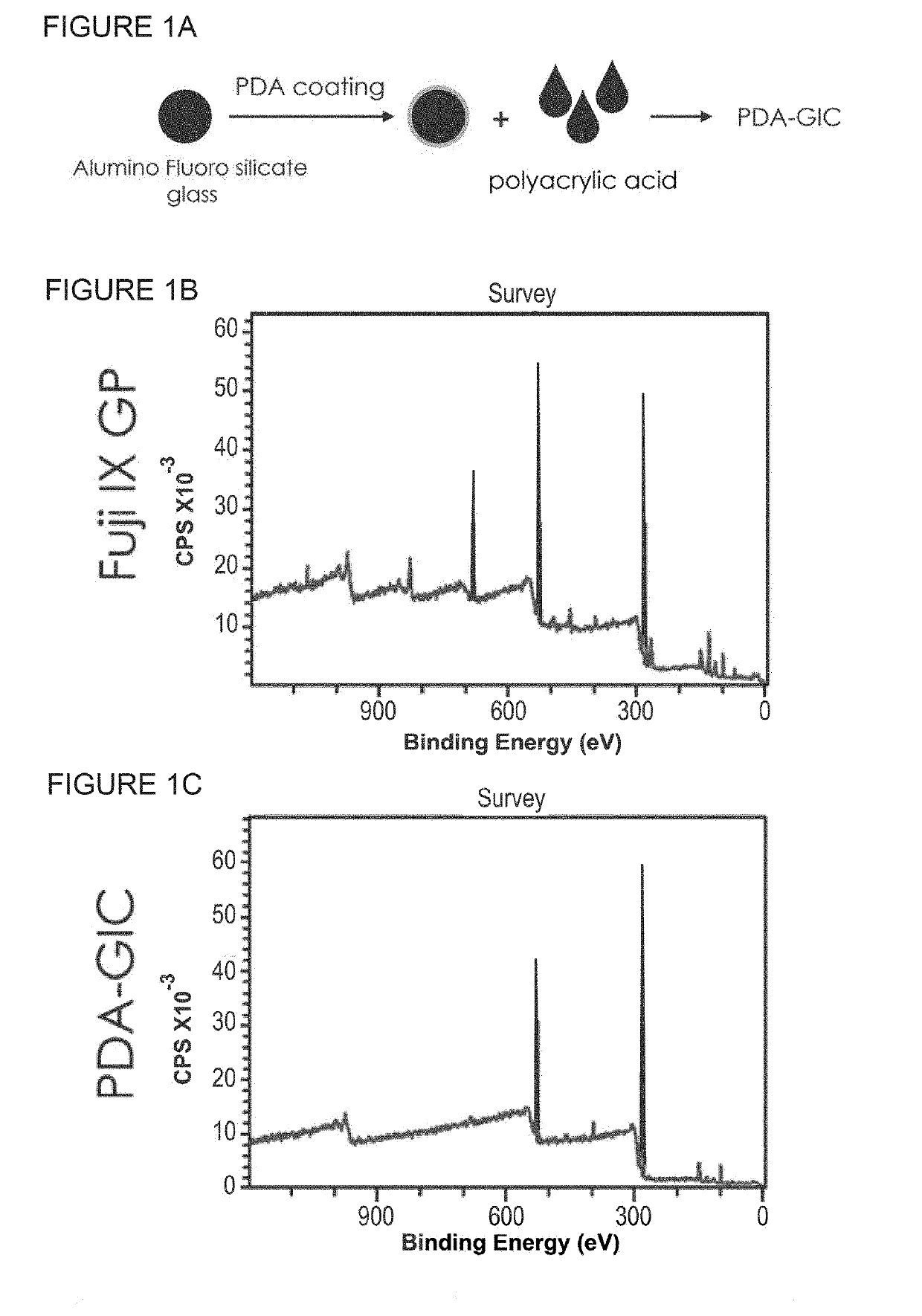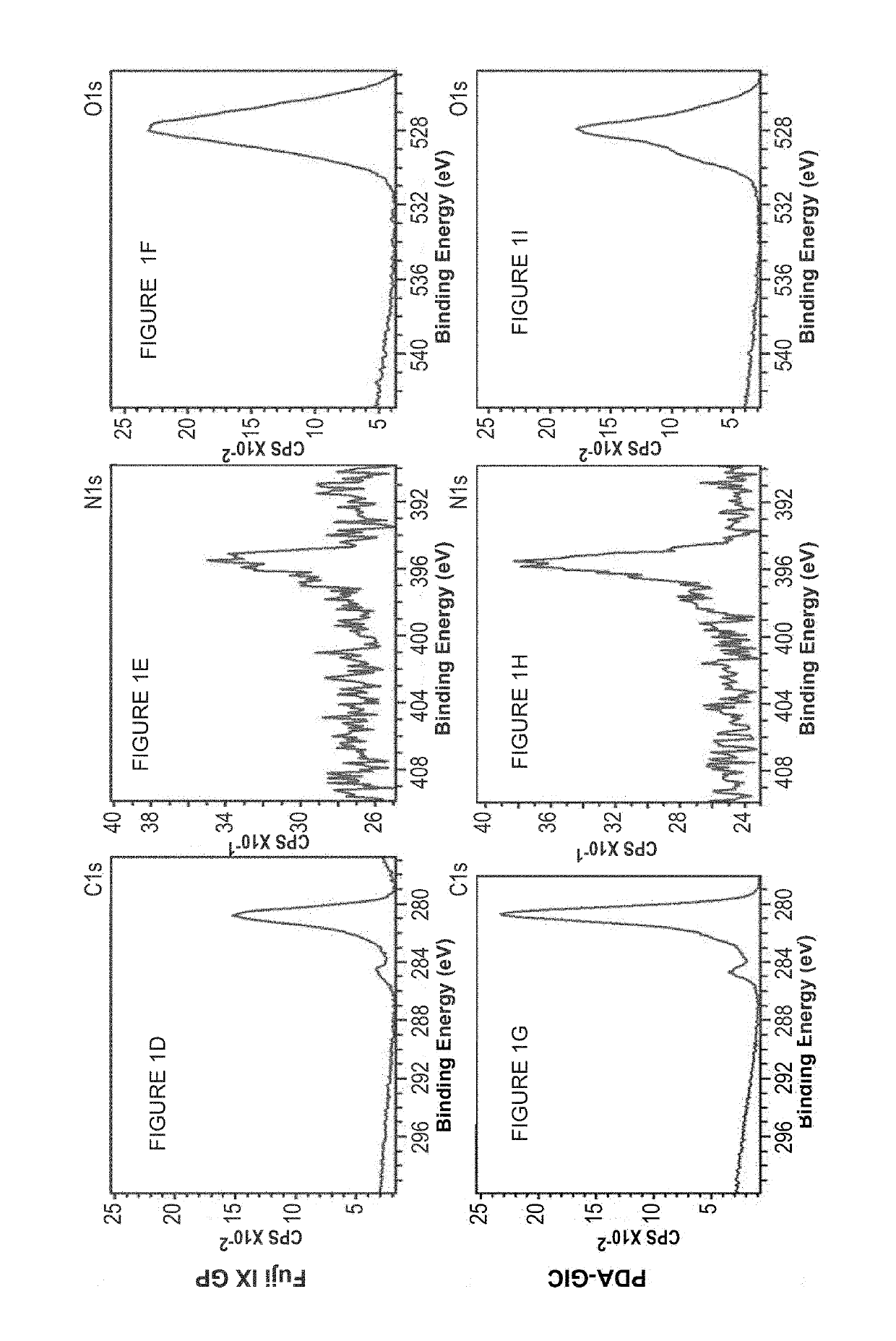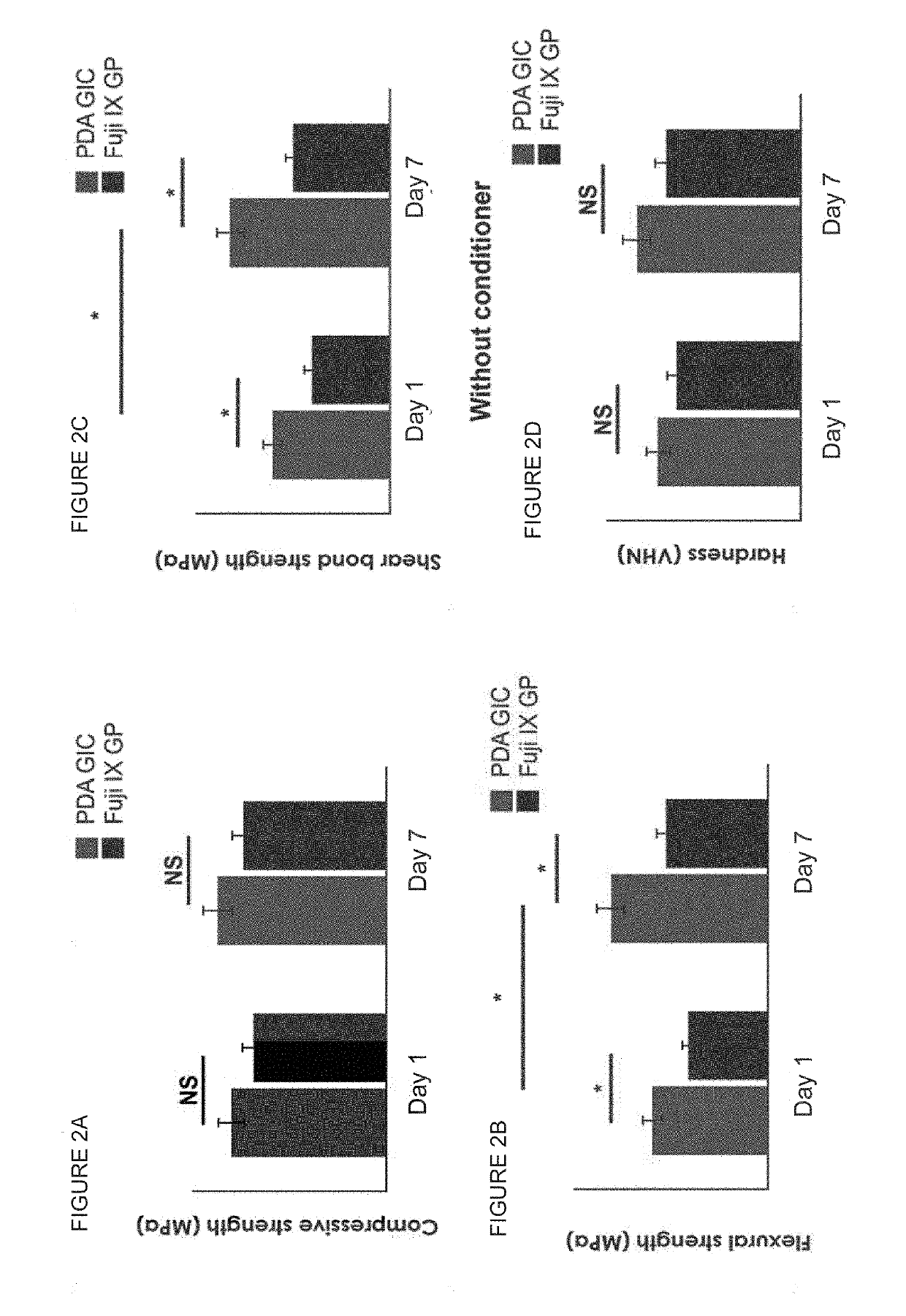Bioactive dental restorative material with remineralization properties
a bioactive, dental restorative technology, applied in dental prosthetics, dental impression caps, dentistry, etc., can solve the problems of low bonding strength to tooth structure, lack of remineralization properties, long setting time, etc., and achieve the effect of superior bonding strength to dentin tooth structure and highly desirable mechanical properties
- Summary
- Abstract
- Description
- Claims
- Application Information
AI Technical Summary
Benefits of technology
Problems solved by technology
Method used
Image
Examples
example 1
Materials and Methods
[0121]In all these experiments, the invented restorative material was compared to Fuji IX GP® (commercially available GIC), which is the gold standard glass-ionomer restorative cement used routinely in everyday dental practices. The commercially available GIC particles were used for the process of coating by PDA. Following the PDA coating process, the coated particles (or coated and uncoated particles) were mixed with the Fuji IX GP® liquid to form the cement.
example 2
[0122]Fabrication of Polydopamine (PDA) coated glass-ionomer particles To make polydopamine-coated fluoro aluminate silicate (FAS) glass ionomer particles, 100 mg of glass ionomer particles were dispersed in 50 ml of mM tris(hydroxymethyl)aminomethane (TRIS) buffer (pH=8.5) using vertexing for 2 min followed by ultrasonication at room temperature for 10 min After adding the appropriate amount of dopamine hydrochloride (10-100 mg), the mixture was stirred for 4-16 h at room temperature in dark. Time of mixing and initial dopamine concentration together control the deposition amount and coating thickness. Particles were collected by centrifugation at 300×g for 5 min and washed triple times with milli-Q® water (>15 MΩ) and dried at vacuum oven. The formation of the PDA coating on FAS particles was confirmed by XPS (see below).
XPS Survey data in FIG. 1B and in FIG. 1C were as follows:
TABLE 1FUJI IX GP ® (FIG. 1B)NamePos.FWHMAreaAt %O 1s527.913.2924573.8820.54C 1s280.912.6025619.4962.73N...
example 3
Mineralization Capacity of PDA containing Glass Ionomer Cements
[0123]To study whether the developed glass ionomer cement has mineralization capacity, disc shaped PDA containing glass ionomer samples with 10 mm diameter and 1 mm thickness were prepared. The particles were coated by PDA as described in Example 2 herein above. The coated particles were then mixed with the polyacid (liquid). Powder / liquid ratio was 3.6 / 1. Five minutes after setting, the samples were immersed in simulated body fluid (SBF) or artificial saliva solutions (0.2 mM MgCl2, 1 mM CaCl2 H2O, 20 mM HEPES buffer, 4 mM KH2PO4, 16 mM KCl, 4.5 mM NH4Cl, 300 p.p.m. NaF, pH 7.0, adjusted with 1 M NaOH) at 37° C. for 1 and 7 days. The mineral deposition on the surface of the samples was analyzed using SEM, EDX, and FTIR (see FIG. 3A-FIG. 3N, FIG. 6A-FIG. 6B).
PUM
| Property | Measurement | Unit |
|---|---|---|
| thickness | aaaaa | aaaaa |
| thickness | aaaaa | aaaaa |
| time | aaaaa | aaaaa |
Abstract
Description
Claims
Application Information
 Login to View More
Login to View More - R&D
- Intellectual Property
- Life Sciences
- Materials
- Tech Scout
- Unparalleled Data Quality
- Higher Quality Content
- 60% Fewer Hallucinations
Browse by: Latest US Patents, China's latest patents, Technical Efficacy Thesaurus, Application Domain, Technology Topic, Popular Technical Reports.
© 2025 PatSnap. All rights reserved.Legal|Privacy policy|Modern Slavery Act Transparency Statement|Sitemap|About US| Contact US: help@patsnap.com



